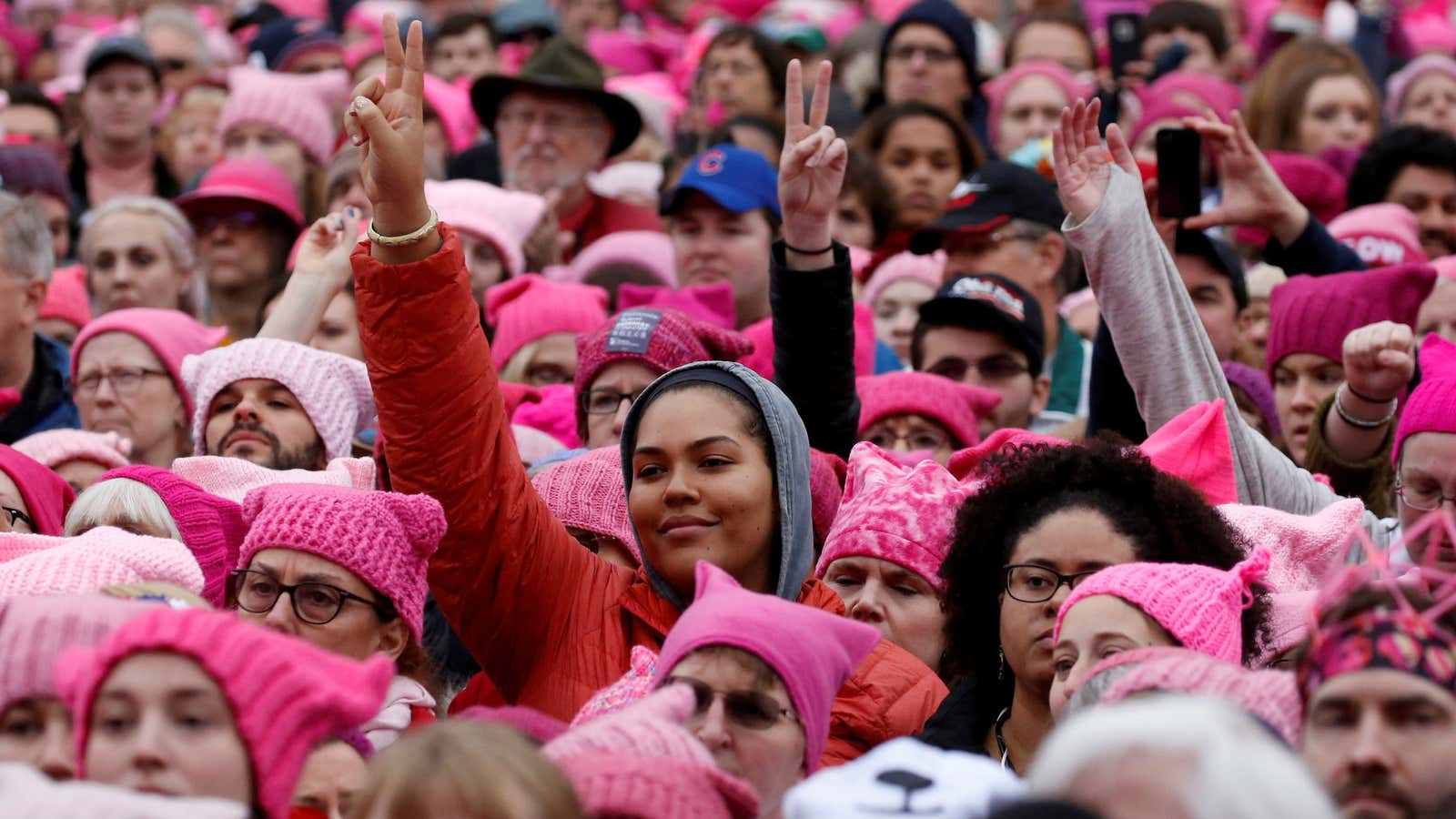Since US President Donald Trump’s inauguration, protests have become ubiquitous in America. The day after Trump was sworn in, millions gathered gathered in cities around the country for a women’s march. Trump’s temporary ban on US entrants from seven Muslim-majority countries likewise led thousands of people to flock to airports to demonstrate.
…But do these these protests matter?
A clever analysis (pdf) by economists from Harvard University and Stockholm University finds that protests do in fact have a major influence on politics, just not in the way you might think. Their research shows that protest does not work because big crowds send a signal to policy-makers—rather, it’s because protests get people politically activated.
Evaluating the efficacy of protest is no easy task. It’s challenging to untangle whether a big protest actually caused a change, or whether that change would have happened regardless, because a policy was unpopular and the protest is a symptom of that unpopularity. The researchers got around this problem by using a natural experiment from the origins of the Tea Party.
Let’s start by going back a decade: In the aftermath of the 2008 financial crisis and the election of Barack Obama, the Tea Party emerged as a new political movement on the American right. The group was primarily focused on opposing government spending and tax increases, and held its first major day of protest on April 15, 2009, known as “Tax Day” in the US. It is estimated that between 450,000 and 800,000 people showed up for more than 500 distinct “Tax Day” rallies around the country that year. According to research outlined in Theda Skocpol and Vanessa Williamson’s book, The Tea Party and the Remaking of Republican Conservatism, it was the first time most rally attendees had participated in a Tea Party protest.
Still, Tax Day protests in many places were not as large they could have been. Why? Because people hate the rain.
The researchers found that in places where it rained that day, the turnout was, on average, 60% lower than at other similar locations. They realized they could use this weather difference to assess the impact of the protests: If the absence of rain means bigger protests, and bigger protests actually make a difference, then local political outcomes ought to depend on whether or not it rained that day.
As it turns out, protest size really does matter. According to their research, rallies in congressional districts that experienced good weather on Tax Day 2009 had higher turnouts, which led to more conservative voting by the district representative and a substantially higher turnout for the Republican candidate in the 2010 congressional election. Specifically, every additional attendee at a Tax Day rally led to somewhere between 7 and 14 additional votes for the Republican in the next election.
The researchers argue that this was not the result of the actual protest, but of the way it motivated attendees. If the protest itself made the difference, they point out, then the effect of a larger protest would dissipate over time as policymakers forgot about it. What actually happened was the opposite: The difference in political outcomes actually increased over time. Larger turnout for the initial protest had lasting effects on voting, political contributions, ideology, and future participation in the Tea Party movement.
Ironically, liberals are planning their own Tax Day march this year to pressure Trump to release his tax returns. Trump supporters should pray for rain.
